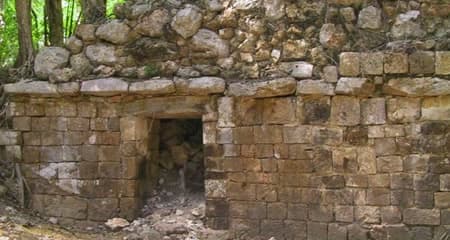Kanki Mayan Ruins. Kankí is the Mayan name of a wild shrub, which produces abundant yellow flowers, the first evidences of occupation of the site date back of ends of the period known like Classic Early, that is to say between the 500 and 600 of our age, his summit seems itself to have given between the years 600 – 650, and the last records of occupation have been dated for the Classic Terminus, between the 800 and 1000.
This site possesses monumental architecture in I peeped of the style Puuc in his earlier manifestations, same that heightens his magnificence for the vegetation that makes a detour. There are situated exposed innumerable substructures (or previous constructions) to the last stages of occupation of the site.
A group of adjacent hills served the settlers of Kankí to raise the center of the site, where there are located several structures that form linked courts arranged in several levels. The bordering plains to the center seem to have be used for the agriculture, and in them two have been sacbés or ways.
The central group is composed by 10 courts, numerous chultunes and low platforms as well as the structure I or Palace that is probably the most important of the site, composed by a building of two levels with columns with capital that from 8 to 10 accesses form for two rooms separated by a wide central perron; in him are observed vestiges of fretworks, Chaac’s large masks and friezes adorned with rectangular, own reliefs of the style Puuc. The majority of the constructions understood in this group prese4ntan columns with capital, so much of drum as monlíticas, and almost all the vaults of the buildings are blocked from the pre-Hispanic epoch.
It is located to 16 Km to Tenabo’s south-east, in the north of Campeche’s condition. To come to Kankí’s site one leads for the federal road 261 course to Tenabo’s settlement up to finding the diversion that he leads to the site.
